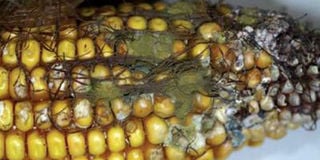Prime
About aflatoxins

Aflatoxins are a family of toxins produced by certain fungi. PHOTO/FILE.
Last Friday’s ban of maize from Uganda by Kenyan authorities has raised eyebrows in the region with most farmers labelling it a harsh punishment.
The decision which was later rescinded on Thursday, according to Ms Kello Harsana, the acting director general of Agriculture and Food Authority (AFA), stemmed from their findings from the surveillance on the safety of food imports to Kenya that revealed that maize from Uganda and Tanzania contain substances such as aflatoxins that cause cancer.
However, our farmers should take this ban seriously and return to their drawing boards to make corrections. No one would like to eat poisoned food, and all Kenya is doing is protecting its people.
Most farmers lack knowledge on how to ensure quality in their produce. They are losing out due to poor quality produce mainly due to poor methods of post-harvest handling. To ensure quality, agronomists have been advising the farmers to use tools such as moisture metres.
These metres are used to measure the moisture level in the grains harvested by the farmers. The metres help to observe quality trends in order to also command better prices in the markets. Extension workers should preach to the farmers that high moisture content affects quality and subsequently the final market value of cereals.
Moisture content is universally used as a price determinant at the various stages of the value chain.
About aflatoxin
Aflatoxin is a toxin produced by a fungus that grows on certain crops, such as maize and groundnuts. Consumption of high levels of aflatoxin can be fatal, and chronic exposure has been linked to liver cancer, suppressed immune response, and child stunting.
Aflatoxin mold contamination that occurs in stored grain destroys up to 40 per cent of East Africa’s annual grain production and is responsible for hundreds of deaths from unsuspecting people after eating highly contaminated maize.
By Charles Tabbu




